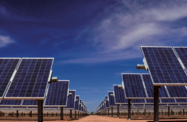In spite of broader global headwinds, the oil and gas industry in Ghana is targeting a substantial increase in production over the coming years.
Ghana is targeting a six-fold increase in oil production by 2018, Finance Minister Seth Terkper said on May 20, adding he expected output to reach 242.3m barrels in 2018 from 39.1m barrels this year. Gas production is forecast to reach 37bn cu feet.
The minister’s comments follow statements from Alex Mould, the head of the Ghana National Petroleum Corporation (GNPC), who said in October that he expected the national oil firm to pump 190,000 barrels per day (bpd) of crude oil by the end of 2016. Currently, the country’s total production averages around 100,000 bpd. To support the expansion, the company is turning towards banks and capital markets to raise as much as $400m – although that figure is roughly half of what was initially targeted, a result of the softer price environment.
Increasing oil production, even in a lower price environment, will be particularly valuable to the country at a time when Ghana is grappling with a budget deficit estimated at 7.5% of GDP, prompting the government to seek assistance from the IMF and plan for the sale of a $1bn Eurobond, its second in as many years.
Oil fuelled economy
Oil has been a major driver for Ghana’s economy in recent years, following the discovery of commercially viable deposits in the offshore Jubilee field in 2007. In the year following the start of production in 2010, the country notched up growth of more than 14%. A report published in March by the Ghana Institute of Governance and Security (GIGS) suggests that the oil industry has contributed $2.7bn to national coffers over just four years of operation.
The Jubilee field, which was developed in 42 months by a consortium including UK-based Tullow Oil, US Kosmos Energy and GNPC, produced 102,000 bpd in 2014, and is forecast to average 100,000 bpd this year, but this falls short of the 120,000 bpd target.
GNPC’s Mould estimates that the Jubilee field should be producing 130,000 bpd by the end of 2016, according to regional press reports. In addition, Tullow recently received approval for further drilling at Jubilee to offset potential drops in output from existing wells.
Ghana’s oil output will also be boosted by newer fields coming on-stream. Production is expected to start in 2016 on the TEN field, which is being developed by a consortium led by Tullow. This will eventually ramp up to an estimated peak daily production of 76,000 bpd. The fields are thought to have reserves totalling 245m barrels, of which 216m are deemed recoverable, while there is also potential for producing 85m standard cu feet per day (scfd) of gas.
Development of TEN received a boost in May when Ghanaian President John Dramani Mahama agreed a deal with Ivorian counterpart Alassane Ouattara over a maritime border disagreement that had frozen new oil drilling in the disputed area, which included the $4.9bn development programme at TEN. The ban, imposed by the International Tribunal for the Law of the Sea, allowed Ghana to continue work on existing wells. Details of the bilateral agreement have yet to be released.
Gas for power
In January, the government, Italy’s Eni and Switzerland-based Vitol announced the launch of activities to develop the Sankofa Gye-Nyame fields, which are expected to provide enough gas to power Ghana’s thermal power plants for at least 15 years. The development is known as the Offshore Cape Three Points (OCTP) Integrated Oil and Gas Project, and comprises five fields. The project is expected to access around 1.5trn cu feet of gas-in-place and around 500m barrels of oil-in-place.
The World Bank has described the development of the unassociated gas fields as a “top priority” for the country, given its hugely overstretched electricity generation capacity, which the government is seeking to expand with a range of projects to reduce shortages and support long-term economic growth, including manufacturing development.
The gas produced by the five fields will replace crude and fuel oil currently being burned to generate power, lowering costs, boosting efficiency and trimming emissions. To this end, the government has been investing in gas capture and transmission infrastructure as well.
Oil and gas production from OCTP is expected to commence in 2017, increasing through 2018, and reaching 80,000 barrels of oil equivalent per day in 2019.
Progress on developing new fields will be particularly welcome given the recent drop in oil prices, which has caused a significant drawdown in capital spending for exploration.

